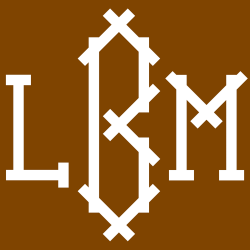Hey, Les.
Do you know about Scott Roeder? Kind of a distant cousin of ours whose will got absorbed into the campaign against abortion. His trial is going on now. I heard that he was a “little bit more” on the fringe than most of the Bible-thumping right-to-lifers, and when I heard that LBM clue I had to look into his qualifications a little bit more. Did you know that he made his own license plates, because he considered himself a sovereign state unto himself? And when he got pulled over because of them, police found materials for a bomb in his car.
This was a decade before he assassinated Dr. George Tiller in Wichita, May 31, 2009. Point blank execution, in the back of his head. In the lobby of Tiller’s church.
Which one was the savior? (Devin Friedman attempts an answer in the new GQ, of all places.)
As Alan “Silky Slim” Reed says, people respect violence.
Yrs,

p.s. The jury didn’t have much trouble separating act from implication. It only took them 37 minutes to arrive at the guilty verdict. Now, I’m just a bit worried about the notion that his defense was crafted to set a precedent for judging other comparable acts of violence. Read this excerpt from the Iowa Independent:
The ruling does not come as a surprise, since Roeder openly admitted he shot and killed Tiller in the hopes of arguing the necessity defense, which would claim that he did so to prevent the doctor from performing abortions. Roeder’s defense was crafted for him by Des Moines anti-abortion activist Dave Leach.
Leach’s hope was that the Roeder trial could set a precedent, whether victorious or not, that could then be applied to other acts of civil disobedience against abortion.
“The very existence of legal abortion, and even the existence of this discussion [of the necessity defense], as well as any hope the prosecutor has of convicting Scott, relies upon their success in keeping the slaughter of millions of human beings ‘irrelevant,’” Leach said before the trial’s conclusion. “Political correctness requires that we not care about their shed blood.”
Scary.
Full story by Jason Hancock, 1/29/10.

 for me, what photography could be. Shells, peppers, nude lovers, gas masks, Point Lobos, dead pelicans, trees, portraits – the portrait of Tina! The images, and words, were startling to me – gave more every time, and lingered long after I put the book down. The range of images within that book, teamed with Weston’s own words, which I would learn are from The Daybooks, spoke to a dedication and artistic evolution that intoxicated me. It encouraged me to keep looking – to see what else was out there.”
for me, what photography could be. Shells, peppers, nude lovers, gas masks, Point Lobos, dead pelicans, trees, portraits – the portrait of Tina! The images, and words, were startling to me – gave more every time, and lingered long after I put the book down. The range of images within that book, teamed with Weston’s own words, which I would learn are from The Daybooks, spoke to a dedication and artistic evolution that intoxicated me. It encouraged me to keep looking – to see what else was out there.”













